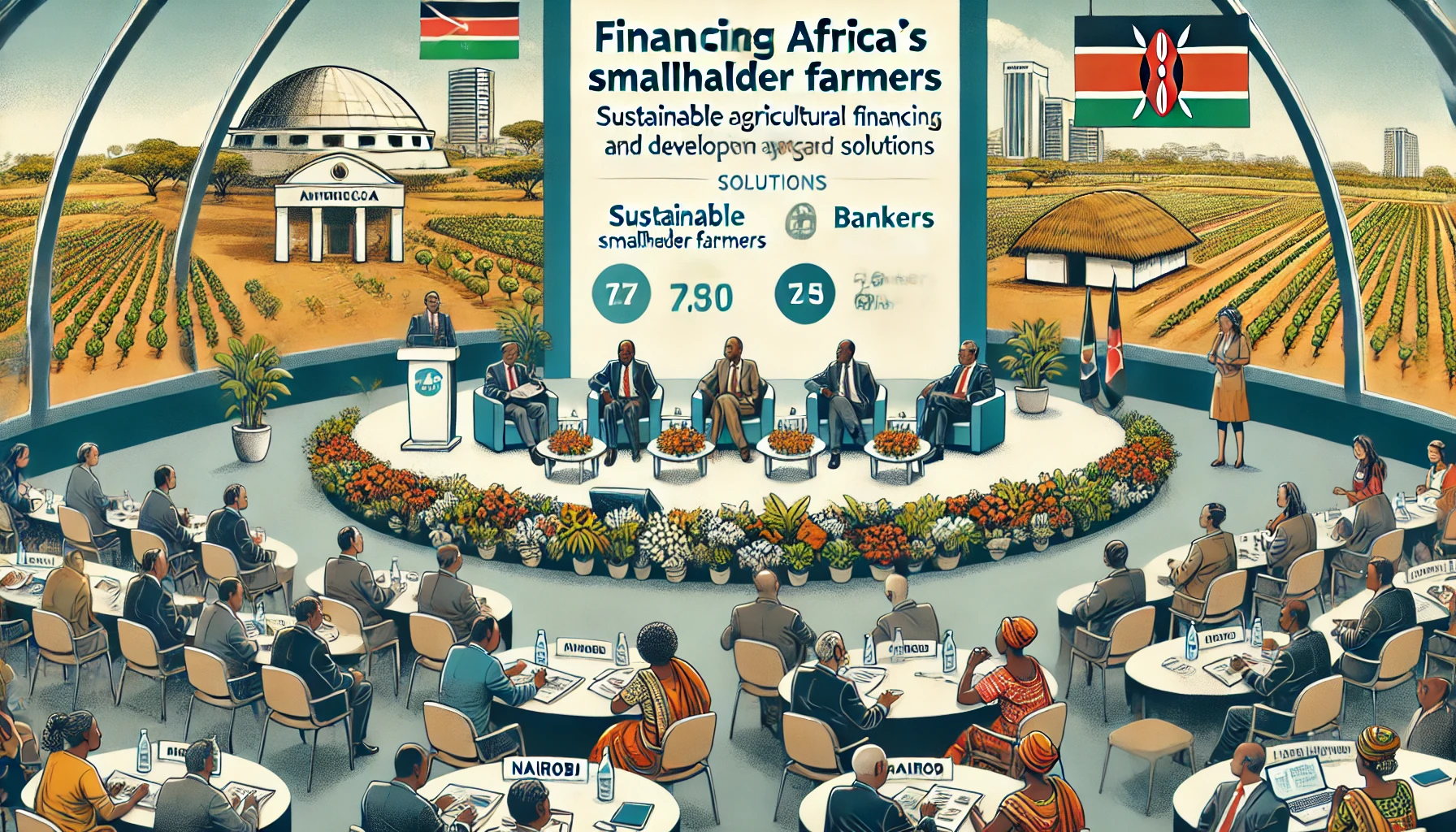Bridging the Financing Gap: Experts Call for Urgent Financial Reforms to Support Africa’s Smallholder Farmers
Delivering the keynote address, Dr. Akinwumi Adesina, President of the African Development Bank Group, highlighted the significant gap in agricultural financing.

- Country:
- Kenya
Global and African financial experts have issued an urgent appeal to reshape financial structures in order to meet the needs of Africa’s smallholder farmers. This call to action was made during a two-day conference on financing Africa’s agricultural sector, held in Nairobi, Kenya. The conference brought together key financial policymakers, development institutions, and agricultural stakeholders to strategize on how to unlock the billions of dollars needed annually to support Africa’s agricultural backbone—its smallholder farmers.
Smallholder farmers account for nearly 80% of Africa’s farming population but control less than 5% of agricultural land. These farmers play a crucial role in food production, yet they struggle to access financial support. Experts at the conference emphasized that government intervention is vital in fostering an environment where financial institutions are encouraged to expand agricultural lending.
Agricultural Financing: A Critical Gap in Africa’s Economic Growth
Delivering the keynote address, Dr. Akinwumi Adesina, President of the African Development Bank Group, highlighted the significant gap in agricultural financing. Despite agriculture contributing 30% to Africa’s GDP, it accounts for a mere 6% of commercial bank lending.
“Smallholder farmers around the world are the same, except those from Africa face difficult odds—poor access to markets, finance, information, infrastructure, and inputs—none of which we can’t address collectively,” said Adesina. He further stressed the need for a holistic approach that includes financial innovation, government-backed initiatives, and private sector participation to drive sustainable change.
Panel Discussion: Breaking Barriers to Agricultural Financing
A key highlight of the conference was a high-profile panel discussion moderated by former international broadcaster Yvonne Ndege. The panel featured:
- Alice Albright, former CEO of the Millennium Challenge Corporation (MCC)
- Brian Milder, Founder and CEO of Aceli Africa
- Jules Ngankam, Group CEO of the African Guarantee Fund
The discussion focused on designing sustainable financing mechanisms to bridge the financing gap in agriculture. Panelists identified major barriers, including:
- Perceived risks associated with agricultural lending
- High transaction costs in providing financial services to rural farmers
- Mismatch between standard loan products and agricultural business cycles
- Lack of collateral and formal financial records for smallholder farmers
- Inequitable value chain structures limiting farmer profitability
Success Stories and Innovative Financial Models
Brian Milder shared an inspiring success story from Tanzania, where targeted financial interventions helped the Tanzania Commercial Bank increase its agricultural lending share from 2% to significantly higher levels. Simultaneously, rural bank deposits quadrupled, demonstrating that well-structured financial models can yield substantial benefits for both banks and farmers.
Milder also highlighted the stark contrast between investment returns in different sectors. Kenyan government bonds, for example, offer a 14% yield, while agricultural small and medium enterprises (SMEs) generate an average return of just 3%. “Capital is like water—it runs downhill,” he noted, emphasizing the need for financial models that account for transaction costs, risk, and capital costs to make agricultural finance more attractive to investors.
Innovative Financial Instruments and Government Interventions
Alice Albright drew parallels between financing agricultural development and past successful global financing initiatives, such as the International Finance Facility for Immunization (IFFIm), which has raised $9.7 billion. She stressed the importance of defining financial challenges clearly, assessing risks comprehensively, and building strong political will among governments to prioritize agricultural finance.
“We must articulate the public policy rationale for financing smallholder farmers and address key design challenges, including risk management and cost efficiency,” said Albright. “With political will, innovative financial instruments, and strategic partnerships, we can establish a robust financing ecosystem that ensures capital flows where it is needed most.”
Jules Ngankam, representing the African Guarantee Fund, provided insights into risk mitigation strategies that could unlock financing for smallholder farmers. He emphasized that financial products must be customized for different agricultural value chains, considering the unique needs and market conditions of each.
The Way Forward: Policy Reforms and Private Sector Engagement
The conference concluded with a strong consensus that structural financial reforms and government incentives are crucial to boosting agricultural lending. Key recommendations included:
- Government-backed risk-sharing mechanisms to reduce perceived risks for banks and financial institutions
- Strengthening rural banking networks to lower transaction costs
- Developing flexible loan products aligned with agricultural cycles
- Encouraging private sector engagement through blended finance models
- Leveraging digital financial services to improve accessibility and efficiency
The event marked a pivotal step toward creating an ecosystem where financial capital can flow to Africa’s smallholder farmers efficiently, ensuring sustainable food production and economic growth. With continued commitment from governments, financial institutions, and development partners, the future of Africa’s agriculture looks promising.
- READ MORE ON:
- Dr. Akinwumi Adesina
- African Development Bank
- Kenya










